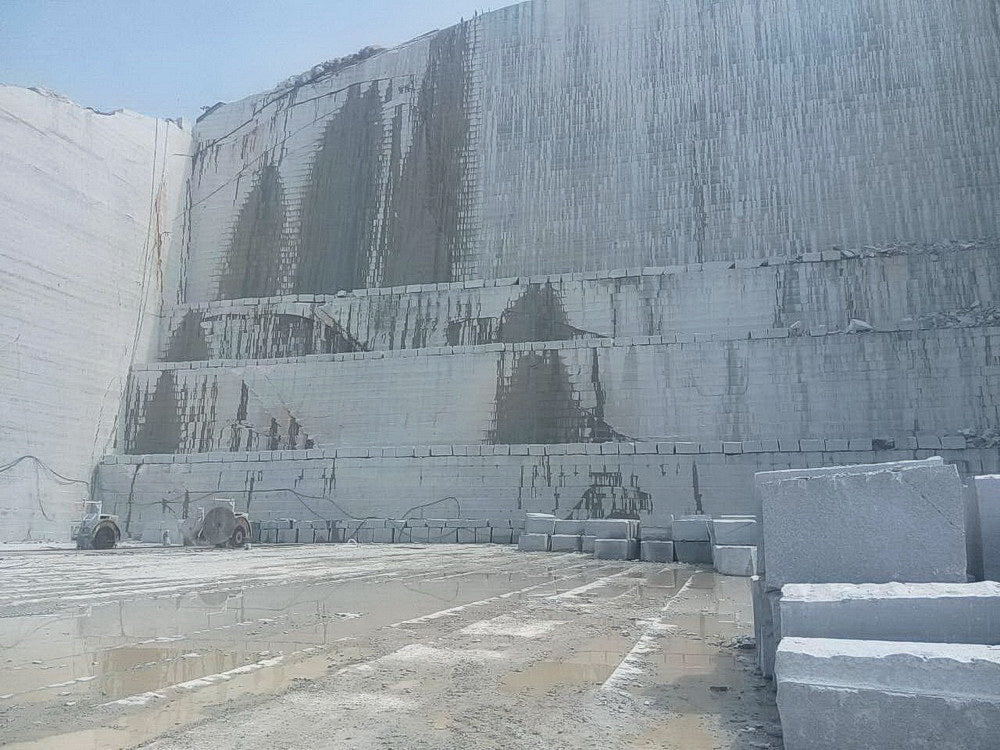Revealing the Mysteries of Granite Quarrying: Where Stamina and Sophistication Meet
The globe of granite quarrying is a realm where the raw strength of nature merges with human creativity to develop structures that stand the examination of time with an air of sophistication. From the depths of quarries to the precise sprucing up in workshops, the procedure of transforming granite right into architectural wonders is a complicated dance of tradition and innovation. As we peer into the depths of this old craft, we start to reveal the hidden complexities that shape the extremely significance of our constructed setting.
The Origins of Granite Quarrying
In the annals of architectural history, the origins of granite quarrying are shrouded in a tapestry of ancient craftsmanship and geological marvels. Dating back to ancient Egypt and Mesopotamia, the extraction of granite from quarries marked the beginning of a journey that would eventually result in the development of a few of the world's most renowned structures.
Granite quarrying's roots can be traced to the proficient craftsmens who acknowledged the stone's sturdiness and aesthetic charm. Through a combination of primitive tools and large resolution, these very early quarry workers discovered granite blocks that would become the structure blocks of human beings.
As human beings advanced, so did the strategies of quarrying granite. The Romans, renowned for their design prowess, developed innovative approaches for drawing out granite to build monuments, holy places, and roadways that stood the test of time.
The legacy of these old quarrying methods remains to form modern-day design, with granite remaining a sign of toughness and sophistication in building projects around the world. (granite quarries in south africa)
Devices of the Quarrying Trade
The advancement of granite quarrying methods from ancient human beings to contemporary times highlights the vital role played by the devices of the quarrying trade in forming the market's practices. In old times, quarrying tools were primary, commonly including knives, hammers, and wedges made from materials like bronze or iron. These devices needed significant workforce and time to extract granite obstructs from quarries.

Additionally, the introduction of pneumatic tools and high-powered machinery has click for more info actually significantly reduced the physical labor required in quarrying operations, enhancing worker safety and productivity. As the quarrying industry remains to innovate, the tools of the trade continue to be at the center of driving progression and visit the website forming the future of granite extraction.
Extracting Blocks of Granite
Utilizing accuracy equipment and advanced techniques, the extraction of granite obstructs from quarries has actually ended up being an advanced process in the modern-day quarrying sector. The first action includes identifying the area and dimension of the granite deposit to determine one of the most reliable extraction method. As soon as an appropriate site is selected, the extraction procedure starts with the exploration of holes for the placement of explosives. Managed blowing up strategies are after that utilized to break apart the granite right into manageable areas.

Polishing and Finishing Strategies
To attain a flawless surface area on granite blocks, skilled artisans use a series of careful sprucing up and finishing methods. After the first extraction and forming procedures, the granite blocks go through a detailed polishing stage to boost their natural charm and longevity.
In addition to polishing, completing strategies are related to additional improve the granite's look. These techniques may consist of flaming, sharpening, or brushing, view website each offering distinct appearances and coatings to suit different aesthetic choices. Flaming, as an example, entails exposing the granite surface to heats to produce a harsh, distinctive coating, perfect for exterior applications where slip-resistance is important. Refining, on the various other hand, gives a matte finish that is smooth to the touch, perfect for indoor counter tops and floor covering. By meticulously picking and applying these brightening and finishing techniques, artisans can transform raw granite blocks into splendid pieces that showcase both stamina and sophistication.

Ecological Impact and Sustainability
With the growing emphasis on ecological consciousness in the industry, granite quarrying methods are significantly looked at for their effect on natural sources and long-lasting sustainability. Quarrying for granite can have substantial environmental effects. The removal process frequently entails the use of heavy equipment, explosives, and large amounts of water, causing habitat destruction, dirt disintegration, and water pollution. Furthermore, the transport of granite from quarries to processing facilities produces carbon exhausts, further adding to ecological destruction. granite quarries in south africa.
To alleviate these effects and make certain sustainability in granite quarrying, sector stakeholders are taking on various measures. Executing sophisticated innovations to minimize power usage and water use, recovering quarried land for eco-friendly repair, and advertising liable sourcing techniques are some approaches being employed. Furthermore, certifications such as the Woodland Stewardship Council (FSC) and the Management in Power and Environmental Layout (LEED) aid customers determine eco-friendly granite products.
Verdict
To conclude, granite quarrying is a process that calls for specialized tools and techniques to essence blocks of granite and polish them to a high degree of finish. While the ecological effect of quarrying can be significant, efforts are being made to boost sustainability methods in the industry. On the whole, granite quarrying is a delicate equilibrium between using the stamina and elegance of this all-natural stone while lessening its impact on the setting.